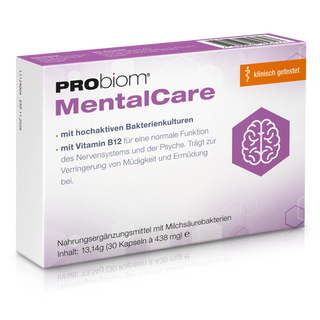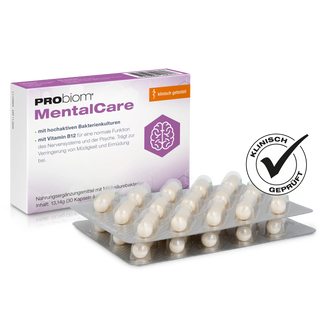Probiotics are no longer niche products. More and more people are relying on these little helpers for gut health – whether to support the immune system, treat digestive problems, or even allergies. But given the growing variety of products, many are asking: Which probiotic is really good? And what should you look for in product tests? In this article, you'll learn which quality features are crucial for probiotics, how to correctly classify product tests, and what you can consider when making your own selection.
What product tests actually achieve
Product tests help assess the quality and effectiveness of probiotics. Independent organizations such as Stiftung Warentest and ÖKO-TEST regularly examine dietary supplements. They examine not only the composition and dosage, but also aspects such as labeling, bacterial stability, hygiene, and possible contaminant contamination. The benefit of such tests is obvious: They create transparency in a market that is often difficult for laypeople to understand.
What you should really pay attention to with probiotics
A key criterion in evaluating probiotics is the precise specification of the bacterial strains they contain. Good products list not only the genus and species, but also the specific strain, such as Lactobacillus rhamnosus GG or Bifidobacterium lactis HN019. or Streptococcus salivarius M18. This information is important because the effectiveness of probiotics depends heavily on the strain in question—a general term like "lactic acid bacteria" is not sufficient.
The bacterial count also plays an important role. Reputable suppliers state how many live microorganisms are contained in each daily dose, usually in the billions. Even more importantly, they guarantee this amount until the expiration date – because only live bacteria can exert their full effect in the intestines.
For the bacteria to even reach the intestine, they must survive the gastric juices. High-quality probiotics are therefore either protected by a special capsule shell or contain particularly robust strains. Unfortunately, there are significant differences here – some products show in tests that hardly any germs survive passage through the stomach.
The list of additives should not be neglected. A good probiotic should be free of artificial colors, flavors, or preservatives. Potential allergens such as lactose, gluten, or soy should ideally be avoided, especially for sensitive individuals.
Another important point: transparency. Manufacturers who focus on quality openly provide information about studies, manufacturing processes, and storage conditions. Some probiotics are even subject to clinical trials—a clear advantage over products that rely solely on blanket advertising claims.
What product tests can and cannot achieve
Product tests can be a valuable decision-making aid, especially when conducted by independent institutions. However, it's important to understand that these tests primarily evaluate the quality and safety of the product—individual effectiveness can vary greatly. What works for one person may not work for another. Therefore, it's often necessary to try different products and observe your response over a longer period of time.
Price also plays a role in tests. However, good value for money doesn't automatically mean that the cheapest product is also the best. High-quality manufacturing, stable bacterial counts, and tested strains cost money—so a certain price is certainly justified.
How to find a suitable probiotic yourself
In addition to following product tests, it's worth paying attention to your own needs. Depending on your health goals, different bacterial strains may be beneficial. Some are more effective for digestive problems, while others have been specifically studied in connection with allergies, skin problems, or stress.
Give the probiotic sufficient time to take effect – at least four to eight weeks is considered a reasonable time. Keeping a diary can help you track changes in your well-being. If you have any concerns or pre-existing medical conditions, consult a doctor.
Comparison portals for probiotics – Where can you find reliable information?
Anyone looking for a quick overview of the best probiotics will find numerous comparison portals online. However, not all of them are equally trustworthy. Some sites act more like sales platforms, specifically recommending products with affiliate links without providing objective evaluations. Others, however, strive for in-depth analysis based on ingredients, research, and consumer feedback.
Reliable sources include:
-
Stiftung Warentest : Offers independent, scientifically based product tests – however, probiotics are only occasionally tested.
-
ÖKO-TEST : Focuses on freedom from harmful substances, transparency, and consumer friendliness. Here, too, tests are rather sporadic.
-
Utopia.de or gesundheit.de : Offer editorially supervised comparisons with a certain focus on sustainability and health.
-
Apotheken Umschau : Provides reliable background information, even if no direct product tests are published.
There are also numerous blogs, advice sites, and health portals that compare probiotics. The Probiotic Health Institute, for example, specializes in the scientific analysis of probiotics and their effects. It's worth paying attention to the following: Are specific bacterial strains mentioned? Are there references to studies? Is the comparison structured in a comprehensible way or is it purely promotional? If in doubt, take a critical look – or compare it with several independent sources.
Conclusion
Product tests are a useful tool for assessing the quality and safety of probiotics. However, they are no substitute for individual trial and error. When selecting a product, paying attention to transparent manufacturer information, specific strain information, sufficiently high bacterial counts, and good tolerability are already addressing the most important criteria.
A good probiotic is characterized by a targeted composition, comprehensible studies and a well-thought-out manufacturing process – and by the feeling of doing something good for your body.


















